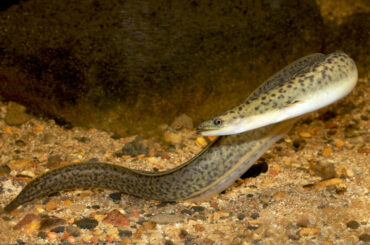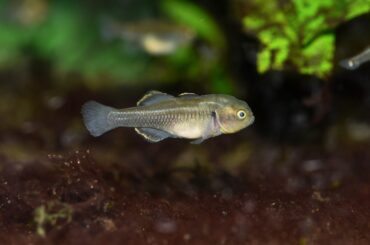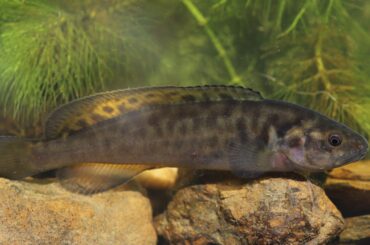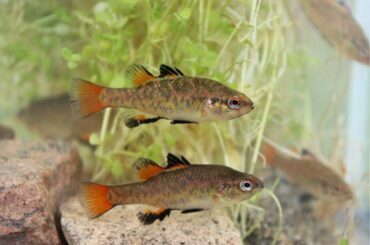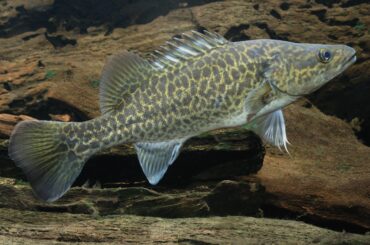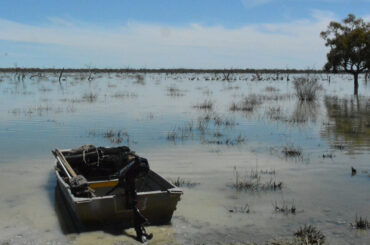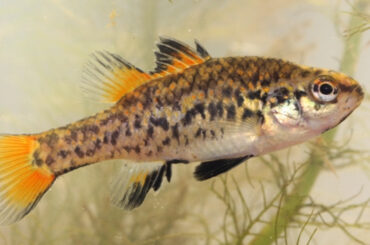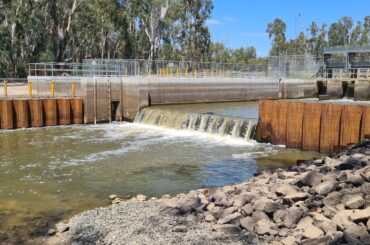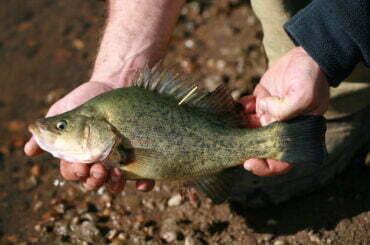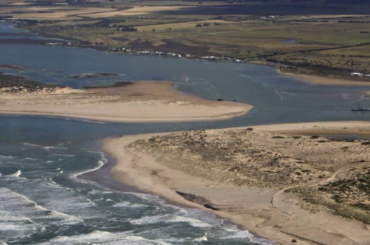Eels have been somewhat of an enigma to researchers, however, they have provided a vital fishery for Indigenous Australians for millennia. Aboriginal people in the coastal Darlots Creek system in VIC harvested and farmed Short-finned eels via complex systems of stone-walled trap and channels and ponds. Freshwater eels are a part of the family Anguillidae
Carp gudgeons are a mysterious species typically found in slow-flowing or still waters that frequently baffle fish enthusiasts and scientists alike. A small and laterally compressed species, the carp gudgeons have caused great confusion over their identification across southeastern Australia. Intially, only one species of carp gudgeon was formally described in the Murray-Darling Basin (MDB)
It’s no secret that Australian native fish provide many benefits to the ecosystems they inhabit and the wider community. However, native fish face various threats to their survival such as habitat degradation, climate change, invasive pests and over-exploitation. Australia's large geographic area coupled with the vast diversity in fish and fisheries presents a challenge for
In August last year we reported on the Southern Pygmy Perch (SPP) and the recovery efforts happening in the Upper Lachlan area. Recently, they have made quite the splash in the Mid-Murray Recovery Reach! The North Central Catchment Management Authority (CMA) is applying their Native Fish Recovery Plan in partnership with the Department of Energy,
Fish stocking is an important tool used to supplement existing fisheries, create new ones and support populations of fish found in rivers, creeks and other waterways. Stocking may be done for the benefit of commercial, recreational or Cultural fishing, but may also be done for ecological conservation to restore or increase the population of threatened/endangered
I’m a self-employed fish researcher based in Lake Cargelligo, in the middle of the Lachlan catchment – so pretty-much in the middle of NSW and also the middle of the Murray-Darling Basin. To anyone reading this who’s thinking ‘nah, that’s not a real job’ and advising their kids against it – that’s what I thought
Fish screens can be a useful tool for irrigators and lifesavers for fish — without fish screens over irrigation pumps, debris and wildlife can be sucked up into pipes that draw water from rivers. This causes fish and other creatures to become trapped and die, which in turn partially or fully blocks the pipes, forcing
Once used as a common bait fish across the Murray-Darling Basin, the now threatened Southern Pygmy Perch (SPP) has now disappeared from most historically known locations. In NSW there are only three broad locations remaining located nearby the towns of Dalton, Holbrook and Albury. The upper Lachlan drainage near Dalton is the most far-north population
Some time ago, we published an article about the fishways at the Koondrook and Cohuna weirs that were constructed in late 2021. More recently, we pondered on the development of performance standards for fishways and what a good fishway looks like. Although still in development, the researchers at Arthur Rylah Institute (ARI) have been collecting
Epizootic haematopoietic necrosis virus (EHNV) is a lethal virus that infects fish through the body surface or gastrointestinal tract. Once in the host, it multiplies in the blood forming organs such as the spleen and kidney and destroys them in the process, ultimately killing the fish. EHNV is only present in Australia, endemic to catchments
Golden perch (Macquaria ambigua) are one of the most desirable species within the Murray-Darling Basin (MDB). They are widely distributed and are a common large native fish in the MDB. The species can grow up to 23kg — however, most are typically less than 5kg. Their potential size makes them a popular fish for many
Recent floods flowing down the Murray River have well and truly reached the Coorong, Lower Lakes and Mouth of the Murray. All 593 openings across 5 barrages, which for the last 80 years have controlled flows at the Mouth of the Murray, were fully open over the summer, with freshwater, saltwater, fish and other creatures
